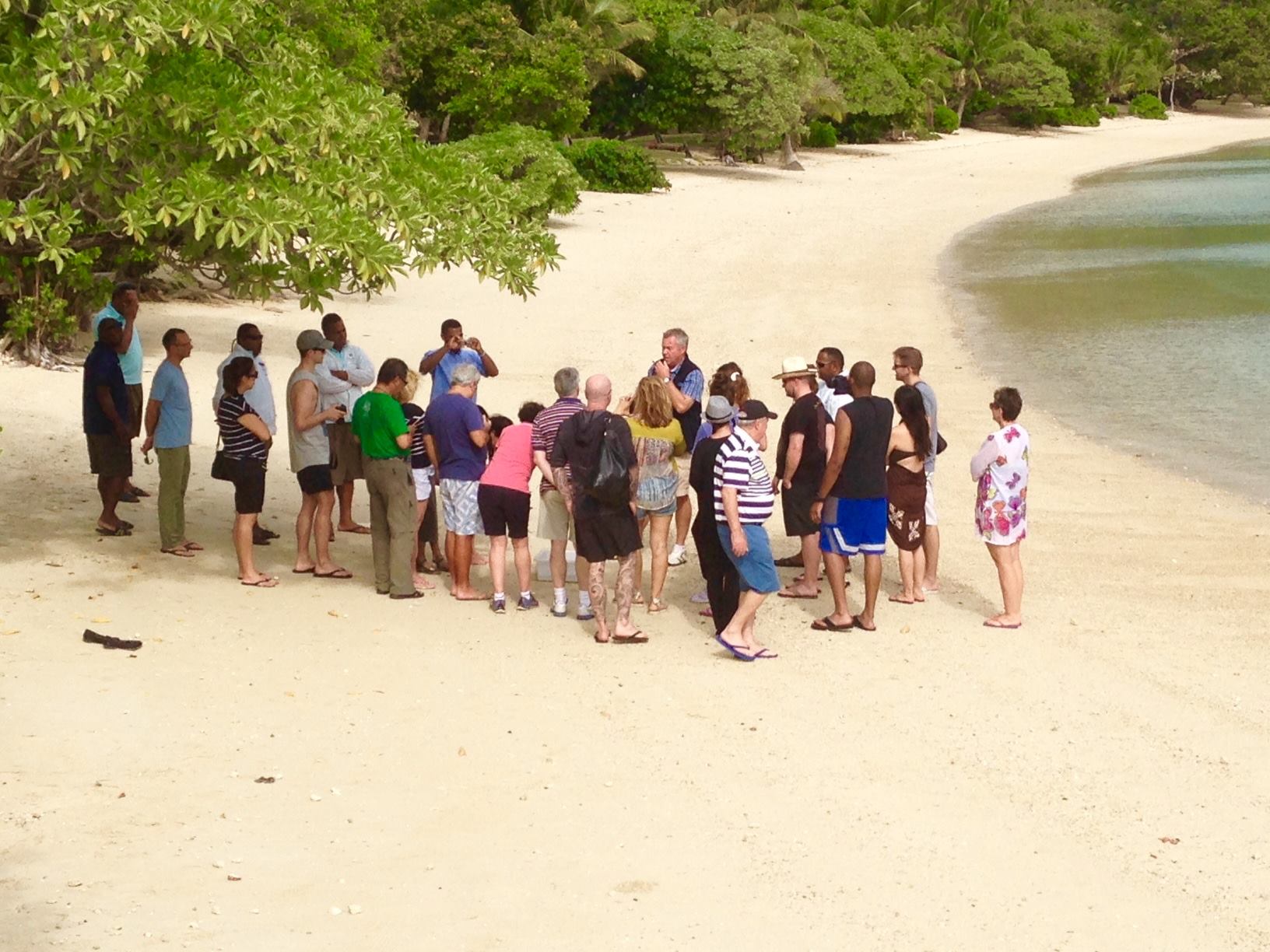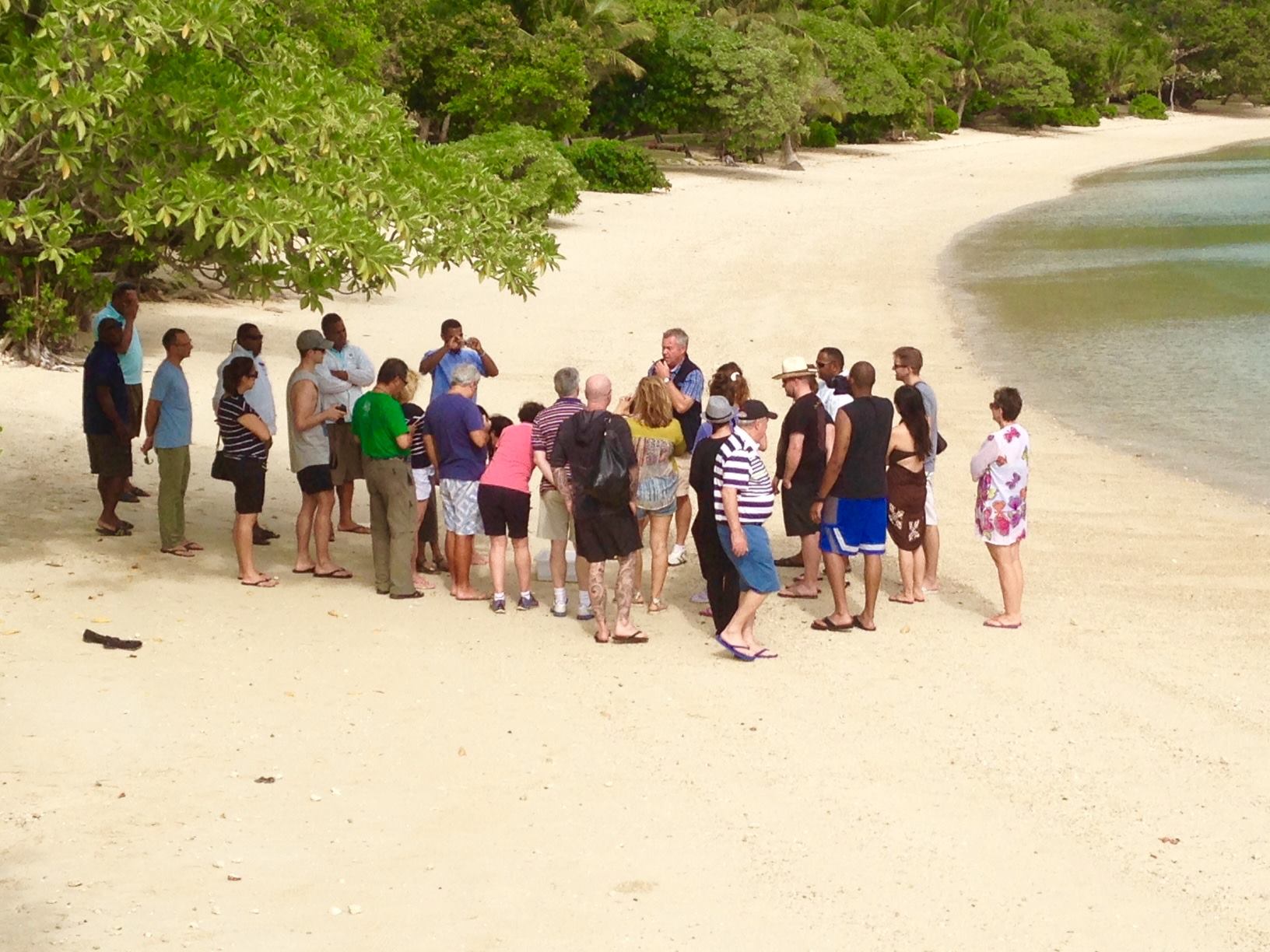A turtle that was found exhausted and unable to dive was discovered by the Likuliku Activities team whilst out on a snorkelling trip at Mushroom reef on Friday 3rd July. They picked it up and brought it back to Likuliku Lagoon.
After attempts to release the hawksbill from the resort, it was found to be very weak and could barely hold its head up. With no visible injuries, it was initially thought that it may have floating syndrome. The turtle was then transferred on that same day to the Mana Recovery Pond as commonly practiced by Mamanuca Resorts. Marine Staff at Mana Island resort closely monitored the hawksbill over the weekend. After 3 days in the recovery pond at Mana, MES staff then assessed the juvenile, and found she had fully recovered.
On Thursday 9th July, MES turtle officer Ilisapeci Sokidi, visited the turtle again, this time tagging both her flippers with Inconel tags, ready to be released. The juvenile hawksbill’s carapace was 36cm long and 34cm wide.
Guests waited eagerly before breakfast on Friday morning for the arrival of the hawksbill now christened Adi Likuliku to be released from the very white sandy beaches of her adopted name. This was the first time Likuliku Lagoon resort will be able to release a turtle rescued from her lagoon, having not being so successful in past two occasions. Geni Flynn a returnee guest had the honours of releasing Adi Likuliku while 20 other guests looked on bidding her bon voyage!
Steve Anstey, Ahura General Manager stated concerns for sea turtles, ‘While we have yet saved another turtle, it is important to practice proper disposal of plastics, a common threat faced by sea turtles. Turtles love jelly fish and a floating piece of plastic is often mistaken by turtles for this delicacy. The plastic cannot be digested once eaten with resulting build up of gases in the intestine which inhibits the turtle from diving and staying under water. It is a painful death. “
Likuliku Lagoon Resort wishes to thank Mana Island Resort and Mamanuca Environment Society for the collective effort, saving our endangered sea turtle and supporting the Mamanuca Turtle Conservation Project in the region. Success stories as such are shared with working partners SPREP (South Pacific Regional Environment Program) at the same time contributing to the TRED (Turtle Research Monitoring Database) also monitored by SPREP with the aim of increasing turtle population in the Pacific.




